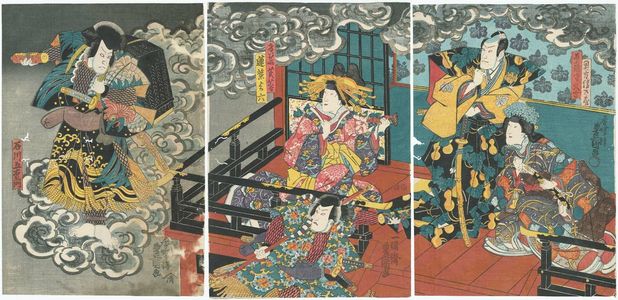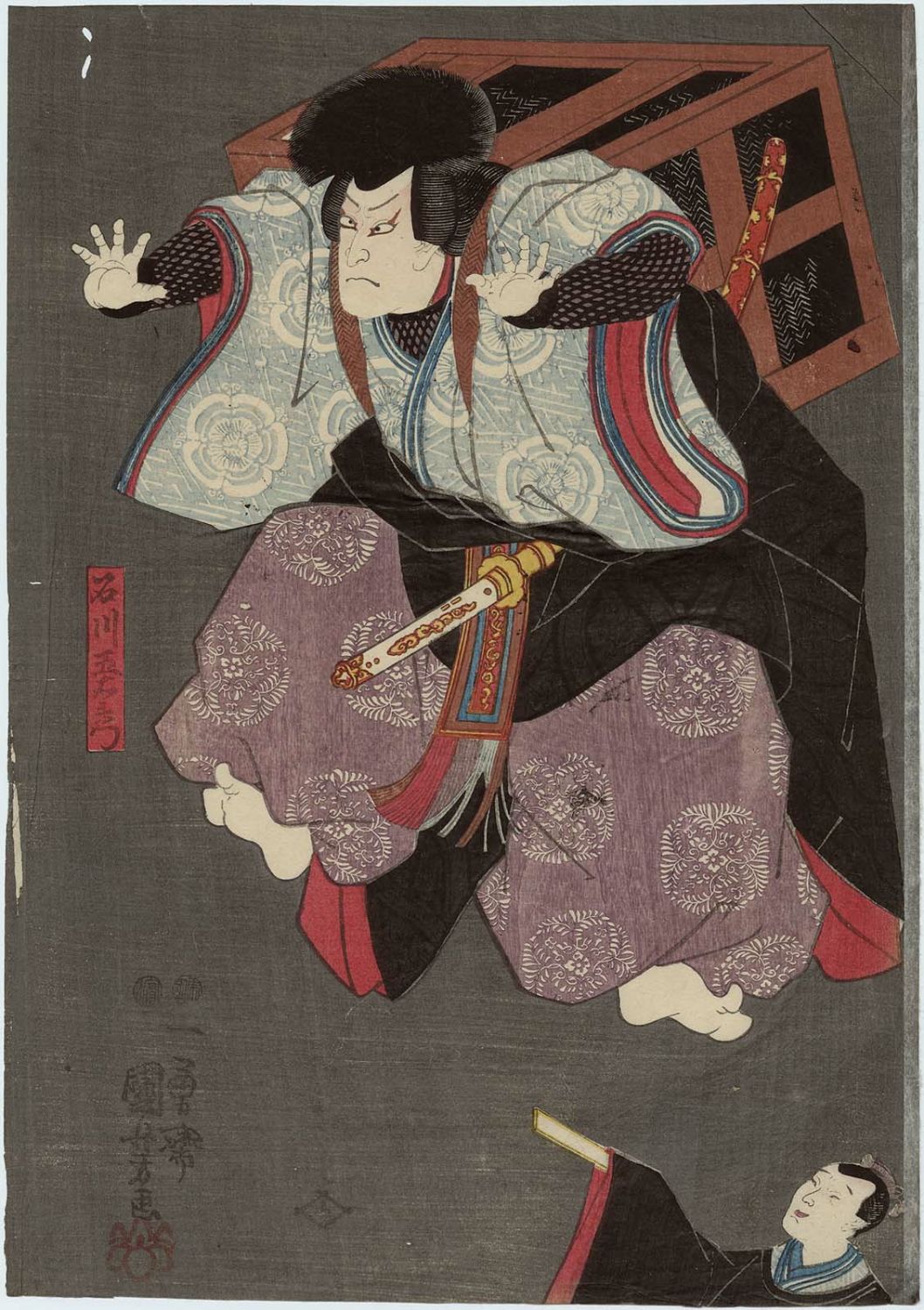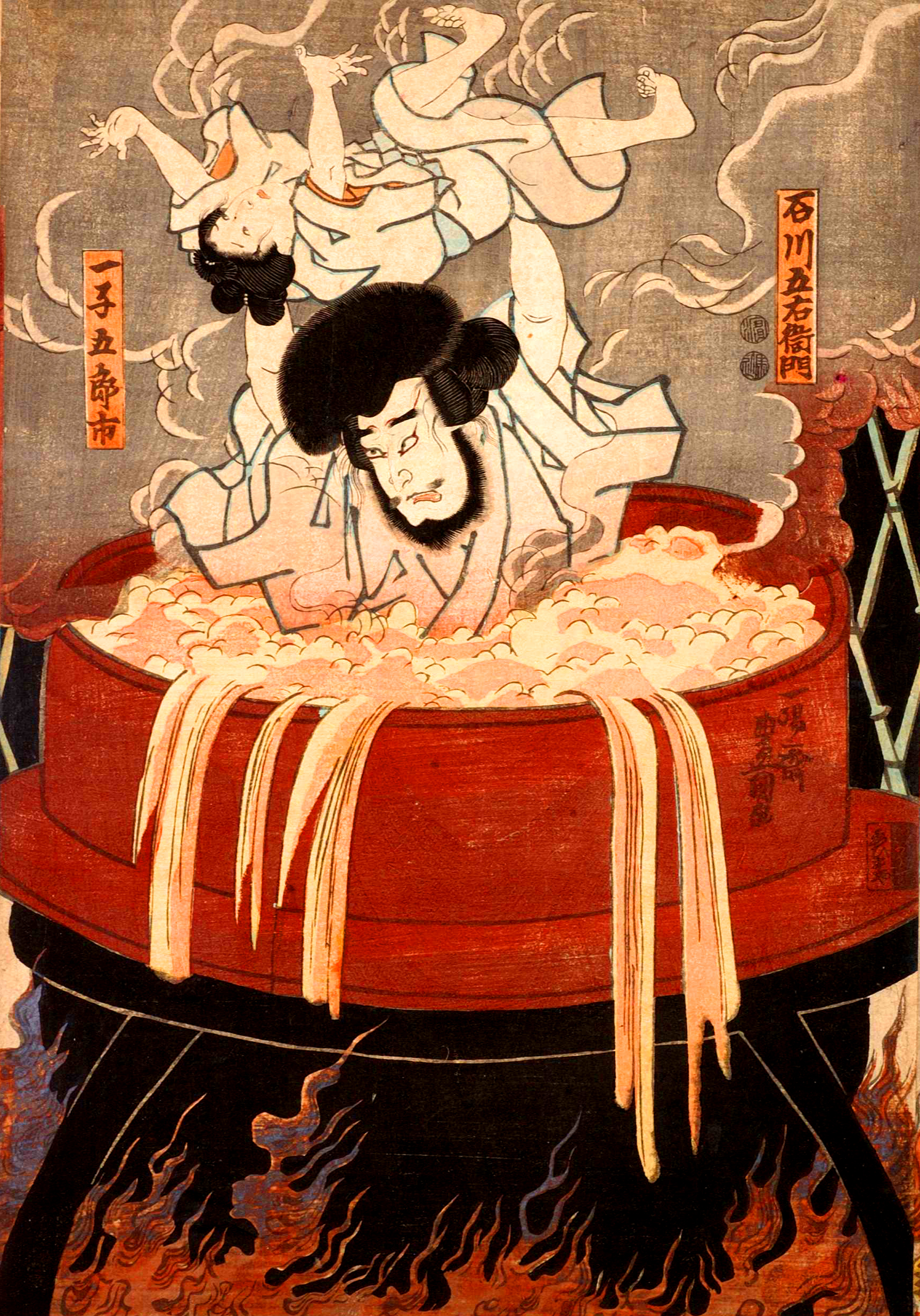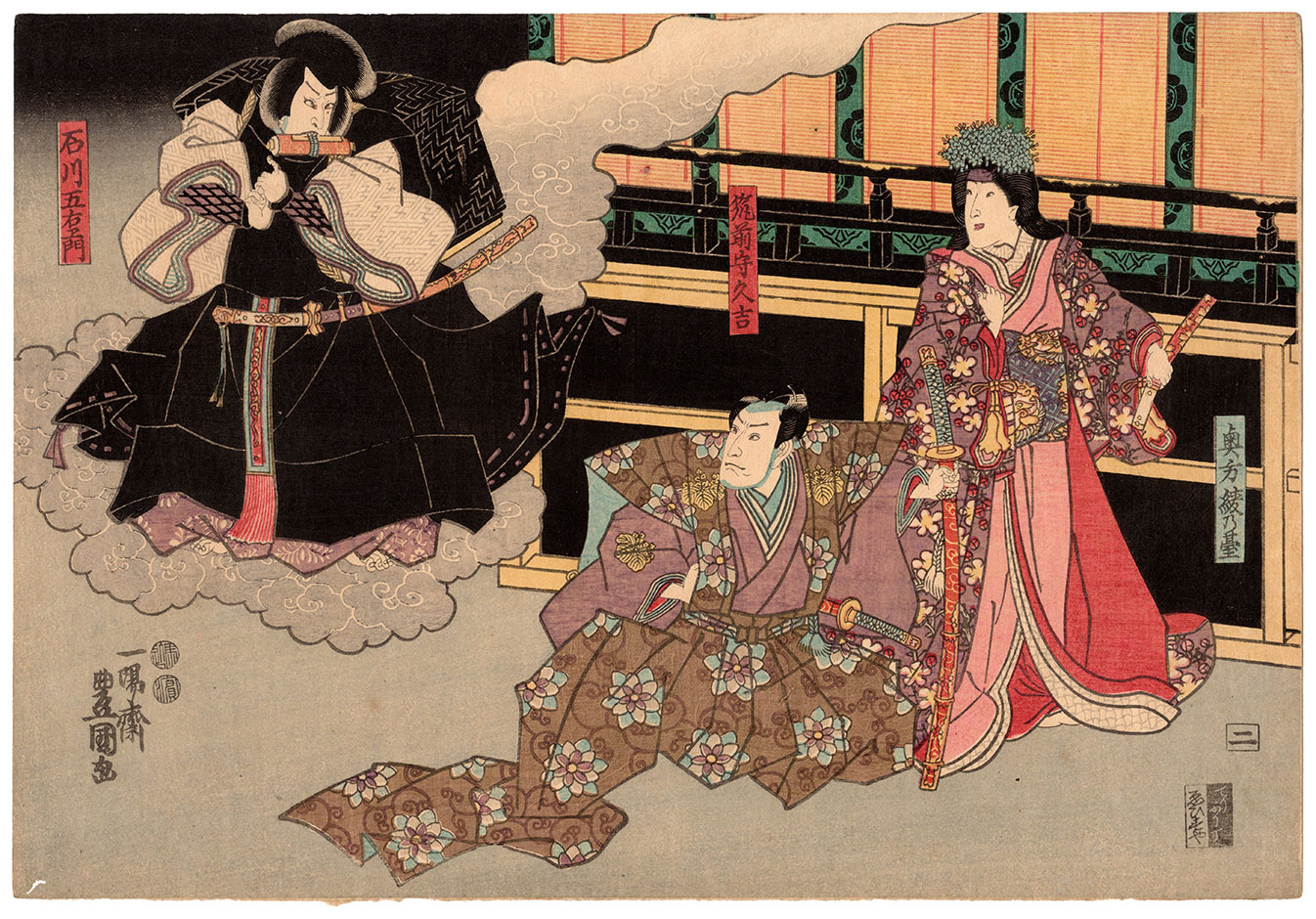Samurai Palace
Arrow buttons for running and Z for throwing shuriken.
Credits:
Composer/sound designer - Kate Tavasoli
Narrative Design and Historical Research - Cecilia Verino
Coding and graphics - Magnus Lindh
Top down dungeon tileset by Michele "Buch" Bucelli and Abram Connelly, the assets sponsor.
https://opengameart.org/content/top-down-dungeon-tileset
Modular Game Worlds in Phaser 3 by Michael Hadley
https://itnext.io/modular-game-worlds-in-phaser-3-tilemaps-3-procedural-dungeon-...
Historical information on Ishikawa Goemon can be a bit fragmentary, sometimes making him seem more like a folk hero than anything else. However, there is credible evidence to prove that the man actually existed, as in Toyotomi Hideyoshi's biography written in 1642, he mentions Goemon, albeit in an unflattering manner, referring to him as a simple thief.
It is usually stated that he was born in 1558 but the true origin of Ishikawa Goemon is not clear, although there are various theories. What is evident is that he was a white-collar thief who robbed all the rich people in the Kyoto area, which at that time was the capital of Japan.
-On the one hand, we find a legend that speaks of Ishikawa Goemon as a "Japanese Robin Hood", robbing the wealthy to distribute it among the poor. In this version, Ishikawa Goemon was called Gorokizu and was from the Kawachi province and was therefore not a runaway ninja at all. Gorokizu would move to the Kansai region and form a band of thieves and bandits, where he would adopt the name Ishikawa Goemon. It is here that he would set up an operation to rob wealthy feudal lords, merchants, clerics, samurai, and just about anyone who had anything worth having. It is said that he would give his profits to the poor. The theft was mainly carried out at night, as during the day they posed as merchants and infiltrated social groups and businesses to find things worth stealing.
Goemon and his bandits would also scatter much of their loot among civilians to mislead authorities or cause confusion to claim responsibility for the theft. This is a very important part of the legend of Ishikawa Goemon, as it challenges the idea of whether he was a charitable Robin Hood-type hero, who gave wealth to the poor, or simply a cunning trickster who used the poor as scapegoats. It wouldn't be until the Edo period that Goemon's antics became romanticized, quickly turning him into a godly hero, although that may not have been the case at all.
-Another theory places Goemon as a ninja who, after the unification of Japan, and in the absence of wars, is forced to become a thief to survive.
-The most plausible story paints him as the second son of a small-time samurai family who, after falling into disgrace due to a shady affair of robbery with murder involved, could not think of a better way to get ahead than to take to the mountains. and become a bandit. In this version, he was born as Sanada Kuranoshin in 1558 to a family of samurai serving the Miyoshi clan in the Iga province. When his father was murdered by members of the Ashikaga shogunate, fifteen-year-old Sanada swore revenge. In some tales, his mother was also killed by the Ashikaga shogunate during a fight, where Sanada would see his parents die. So he began training in the secret ninja art of ninjutsu with a teacher named Momochi Sandayu, the man who would start the ninjutsu school in the Iga province. Momochi would adopt him and begin raising him as her own. However, during the tough ninjutsu training, Sanada would become attracted to Momochi's wife and before long, one thing led to another. Outraged by the revelation, Momochi would banish Sanada from his home and be forced to flee from his master's temper. To make matters worse, he would steal Momochi's legendary sword before leaving. In another version of this tale, Sanada steals gold from Momochi and also takes his wife with him when he flees. However, it should also be noted that Sanada had a violent temper and an overall terrible attitude. It is likely that because of this, he became impatient with Momochi's wife in the first place, whom he would eventually murder, as she, in his words, was holding him back.
The fact is that his favorite clientele were the potentates of the time: rich merchants, great feudal lords, men of the clergy. Meanwhile, the common people watched with sympathy as he and his band of foreign friends cleaned the safes of Kyoto's bigwigs with impunity. Goemon's fame was clearly growing, but at the same time he was gaining very powerful enemies.
Among them was Toyotomi Hideyoshi, the lord and master of the newly unified Japan. Legend has it that troops in the service of Toyotomi Hideyoshi (one of the most important feudal lords of the 16th century) killed Goemon's wife and he decided to avenge his wife's death by trying to murder Toyotomi. In other versions, outraged by the despotic turn that Hideyoshi's government had taken, Goemon used his ninja skills to sneak into Fushimi Castle itself, his official residence in Kyoto, and slit his throat while he slept, in other versions, rob him. In the middle of the darkness he ended up knocking over a censer (in other versions a bell) with a kick and the noise instantly alerted the entire garrison, which was upon him before he could even get close to the tyrant's chambers. Surely all this is nothing more than a nice story, since neither Goemon nor anyone in their right mind would have thought of attacking the most powerful man in the country in his own castle.
The little we know about him for certain is told to us by Father Pedro Morejón, a Spanish Jesuit missionary who lived in Japan at the time trying to evangelize the area. Morejón that the execution took place in Kyoto, among a huge audience, who came from distant lands to see the spectacle. He was cooked over low heat in olive or soy oil, as he wrote, and along with him, Ishikawa Goemon's son, and various relatives and collaborators, also died in the same way.
He is said to have been taken to the main gate of the Buddhist temple at Nanzen-ji in Kyoto, where he would be punished for his crimes of theft and attempted murder. But as with most things in Japanese history, there are some conflicting accounts. Goemon was quickly captured and sentenced to death, although his death would not be the quick decapitation we are used to seeing. He would be publicly burned alive in an iron cauldron along with his young son. But, according to some versions, he was able to save his son by holding him high above his head, so he was rescued by onlookers. In the final version, Goemon would attempt to save his son from the heat of the cauldron by holding him above his head like he did in the first instance, however, he would suddenly sink him deep into the bottom of the cauldron, killing him. instantly to save him from pain. He would then hold the boy's body above his head in defiance of Hideyoshi's regime until finally he himself sank to the bottom of the pot. When he confronted Hideyoshi during his death, he was apparently said to have confessed that he was indeed a thief and had stolen a fortune, however, he would also accuse Hideyoshi of being a thief, as in Goemon's words, Hideyoshi had stolen from Japan. Before he died, Goemon wrote a famous poem that says that no matter how the world turns out, there will always be thieves.
The legendary life of this bandit and his capture is the plot of some famous kabuki theater dramas. In the kabuki plays of the Edo period (1615-1868), some historical figures appeared as protagonists whose lives were adorned with legendary episodes to create a greater dramatic effect. The bandit Ishikawa Goemon (1558-1594) was presented as a kind of Japanese Robin Hood, with a tragic end. Because he had secret knowledge of ninja, he was accused of trying to attack the great lord Toyotomi Hideyoshi (1537-1598). For this reason he was captured by the samurai Sengoku Hidehisa (152-1614) and sentenced to die along with his young son in a large pot of boiling oil.
In the picture, the famous actor Ichikawa Kodanji IV (1812-1866) plays the role of Ishikawa Goemon trying to avoid his arrest.
Pictures and links for more info:
https://artsandculture.google.com/entity/ishikawa-goemon/m03zfxg?hl=es




https://www.idaya.co.jp/go/tokutyou.htm
https://www.kabuki21.com/goemon.php
https://www.kirainet.com/goemon/
https://historiasdelahistoria.com/2015/11/04/ishikawa-goemon-el-robin-hood-japon...
https://www.univision.com/explora/ishikawa-goemon-el-ladron-japones-estilo-robin...
List of the Kingdom of Nippon, which they corruptly call Japan. Bernardino de Ávila Girón https://clasicoshispanicos.com/ebook/relacion-del-reino-nipon-que-llaman-corrupt...
https://www.swordsofnorthshire.com/blogs/theblade/ishikawa-goemon-was-he-really-...
| Status | Prototype |
| Platforms | HTML5 |
| Authors | Magn, Cecilia Verino |
| Genre | Action |



Comments
Log in with itch.io to leave a comment.
I saw other comments that the shuriken is hard to use, or the game is hard. I found it was very easy, you can just hold z and run around carefully. Shuriken kill enemies in other rooms (even Toyotomi).
I think there is a bug - after killing Toyotomi the first time, I could not throw any more shuriken, even if I was killed. I had to reload the browser to play again.
Thanks for the feed-back!
I agree that throwing the shuriken is not hard, but some might find it wrong that shooting is impossible while standing still. Possibly there is a bug - or even many. Since this is a prototype I didn't have time to properly test the game. I have seen the same bug pop up once in a while, but it is not easy to find out why.